

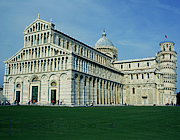
Beautiful Pisan Romanesque architecture and a lovely medieval hilltop village - essence of Tuscany!
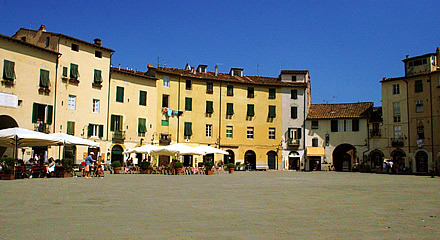
A relatively quiet Italian city, important since Roman times, with a beautiful piazza at its medieval heart and many exquisite Romanesque churches. Lucca's prosperity is based largely on very high quality olive oil.
Piazza del Anfiteatro is absolutely gorgeous, ringed with medieval builings. The Roman amphitheatre once stood here hence the very distinctive elliptical shape.

Lucca really does have more than its fair share of beautiful Romanesque churches. The Duomo di San Martino is stunning and the facade of San Michele in Foro is one of the most beautiful I've seen anywhere.
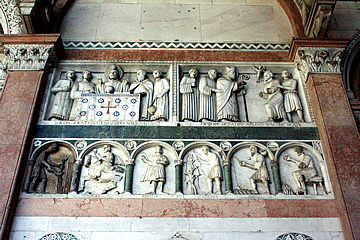
The facade of the duomo is strangely asymmetric with the right hand arch much narrower and lower than the others. This was because it was squeezed into the only space available alongside the pre-existing bell tower.
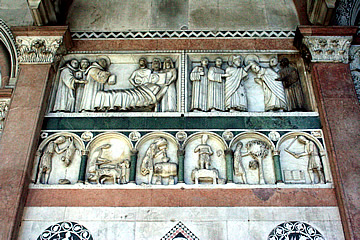
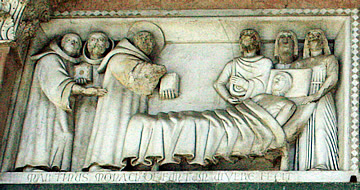
The carvings inside the porches include a lovely sequence of the months of the year with associated activities and very fine panels of the life of St Martin by the architect of the facade, Guidetto da Como.
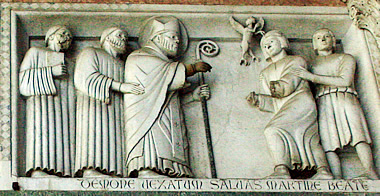
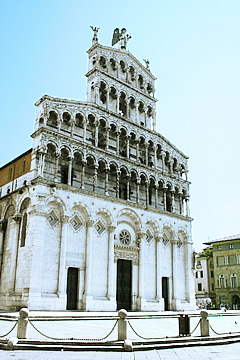
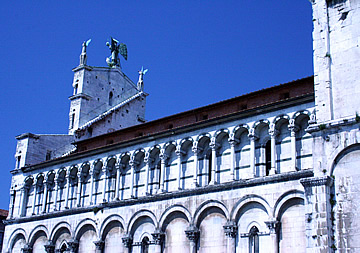
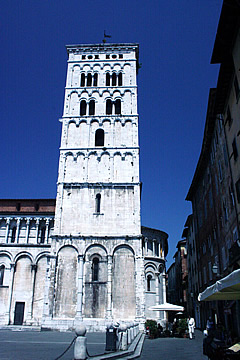
The arcades on the west front of San Michele incorporate slender columns in many different styles - twisted, striped, with chevrons or zig zags or more intricate patterns or bearing sculptures - while the south front has a different face carved above each column.

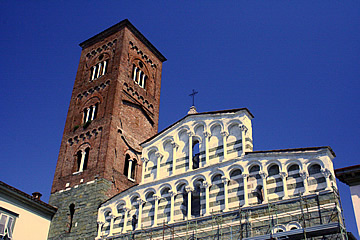
San Michele is unfinished - the money ran out before the body of the chrch could be raised to the full height of the west front.
It was a scorchingly hot day so not really conducive to wandering, but we got the impression of a really lovely city.
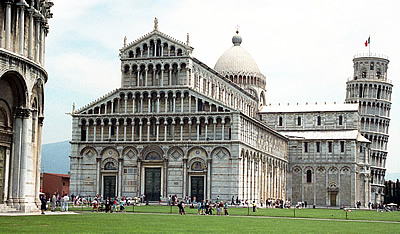
Though having visited several times we have rarely gone far from the Campo dei Miracoli where the Duomo, Baptistry, Camposanto (a cemetery) and unbelievable Leaning Tower all stand. I'm sure Pisa has more to offer but these buildings are so stunning in there elegant Pisan Romanesque architecture that it's hard to explore further if you're not actually staying here.
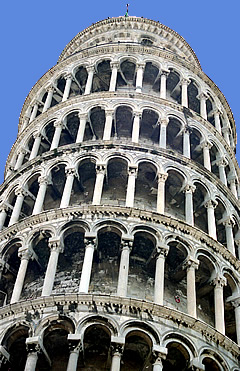
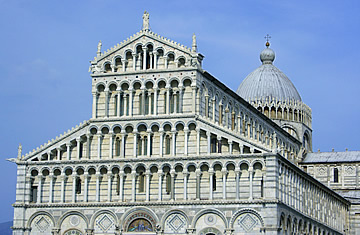
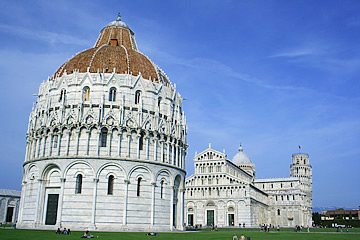
The duomo was begun in 1064 and is the archetypal example of Pisan Romanesque with its distinctive contrasting grey and white and a west facade of arcades with slender columns and rounded arches.
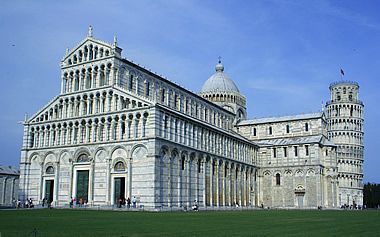
Inside the duomo the layered style continues to beautiful effect in black and white marble.
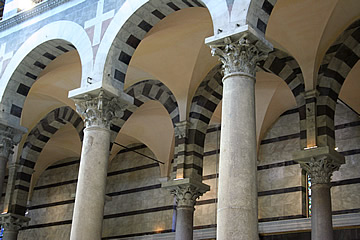
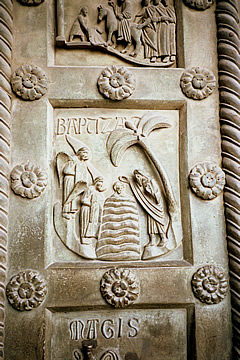
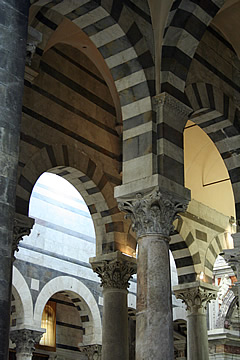
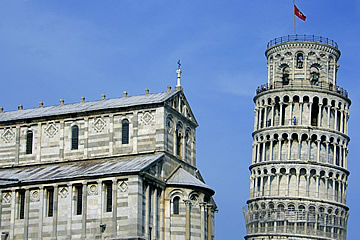
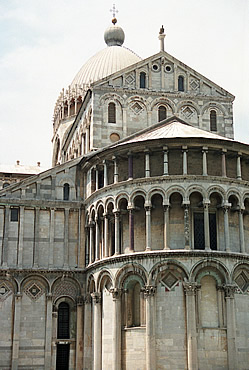
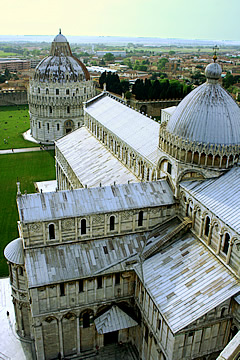
The Baptistery, the largest in Italy, was begun in the mid-twelfth century and completed in the latter half of the thirteenth and is a mix of styles from Romanesque on the lower levels to Gothic at the top.
A century later they started to build the campanile but after only three of its eight storeys were completed it had begun to lean.The cause is the saturated sandy soil on which it stands.
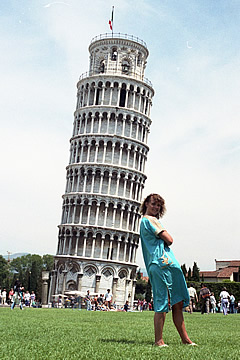
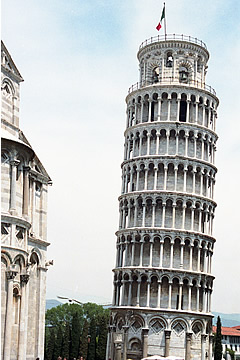
The tower was only completed 180 years later when the architect Tomasso di Andrea da Pontedera had the crowning stack with its bell chamber built on top. It must have been quite a terrifying experience to be the final architect on this tower, not really knowing whether it would stand or fall!
Galileo was born in Pisa and used the infamous lean to drop metal balls of different mass to demonstrate the constancy of gravity.
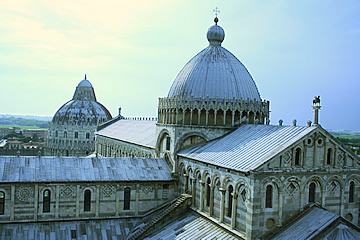
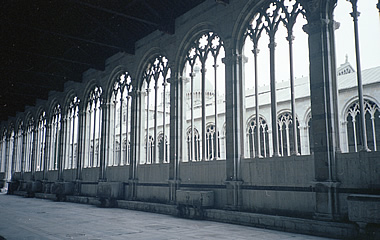
In 1990 the tower was closed, it was leaning very precariously and deemed unsafe.
Through the rest of the decade a massive operation was carried out to stabilise the tower.1 A very clever process reinforced the soil under the tower and removed soil from beneath its north end (it leans to the south) so that the tower's own weight caused it to straighten. Not too much though, it still needs to lean a bit for its reputation to remain intact!
In 2007 it was open to visitors again so we bought timed tickets and went to the top - needless to the say the views are terrific.
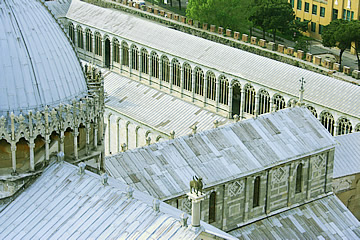
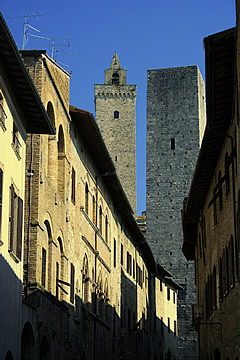
San Gimignano delle Belle Torre, to give it its full name, is a lovely medieval hill town, known for the many medieval towered houses of its feuding families. It once had 72 towers, only 15 remain - the taller the tower, the greater the prestige of the family.
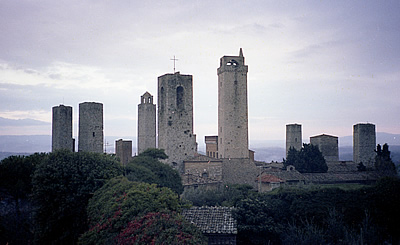
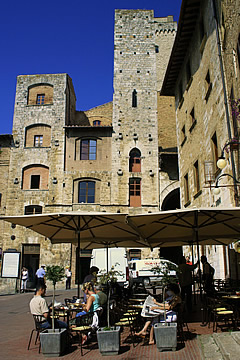
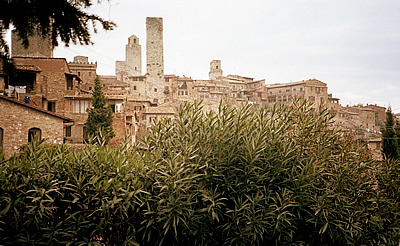
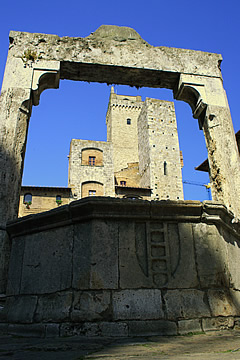
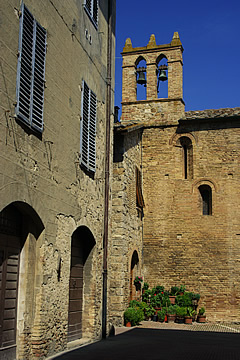
If you can catch it at a time when it's not busy it's a lovely place to wander or sit in a shady café.